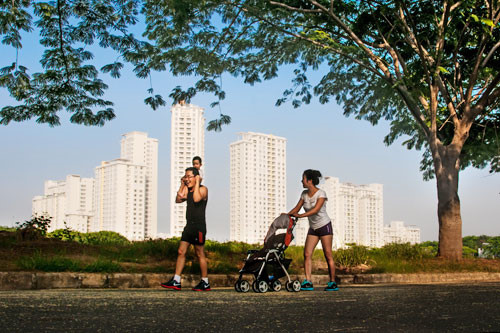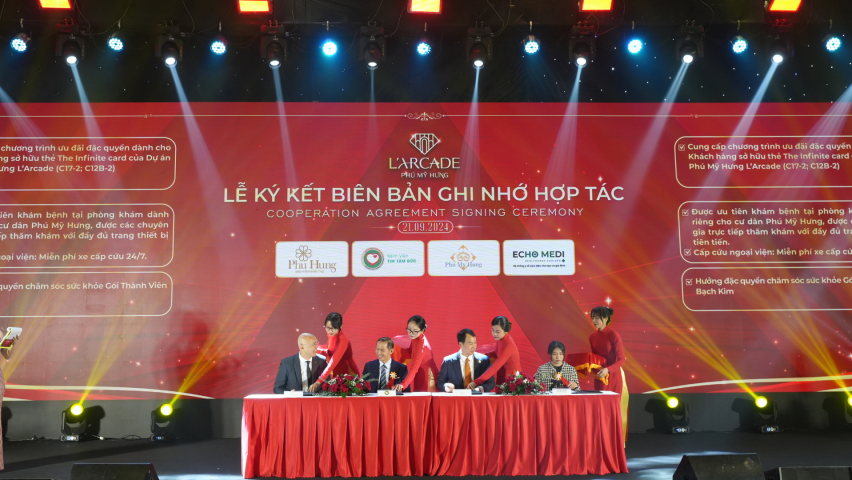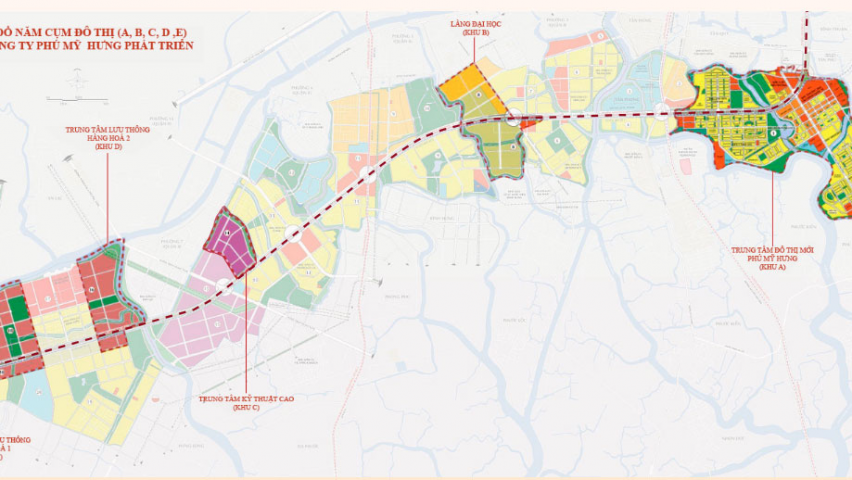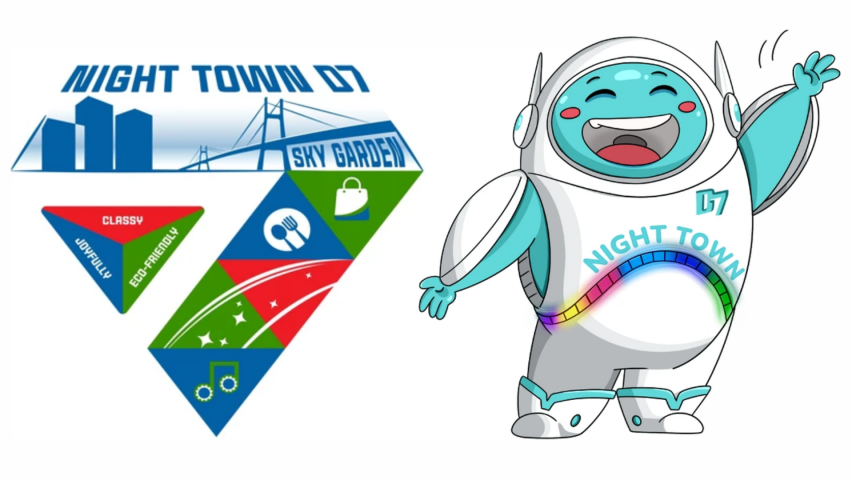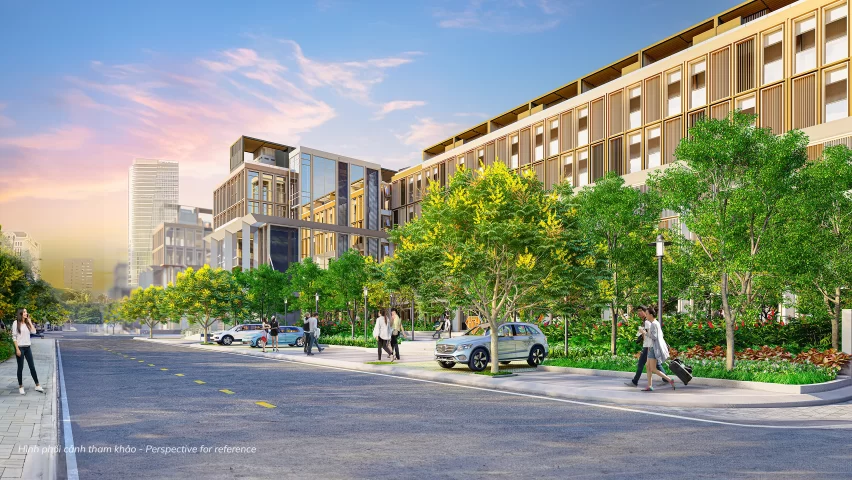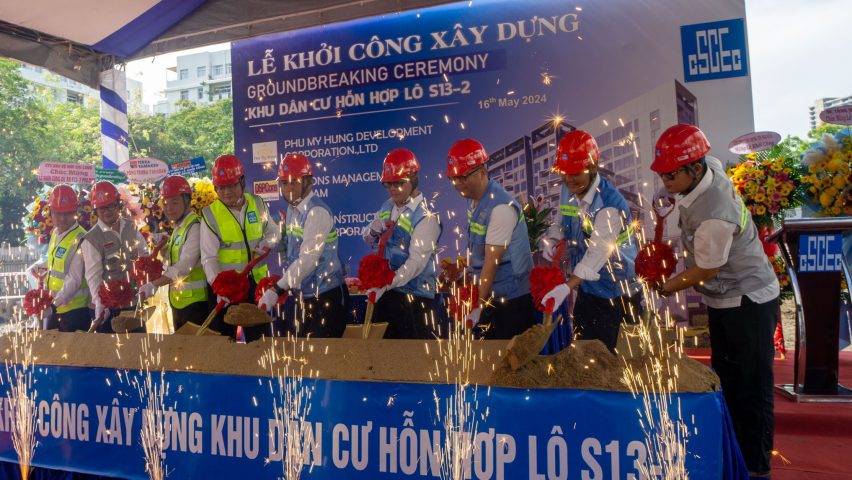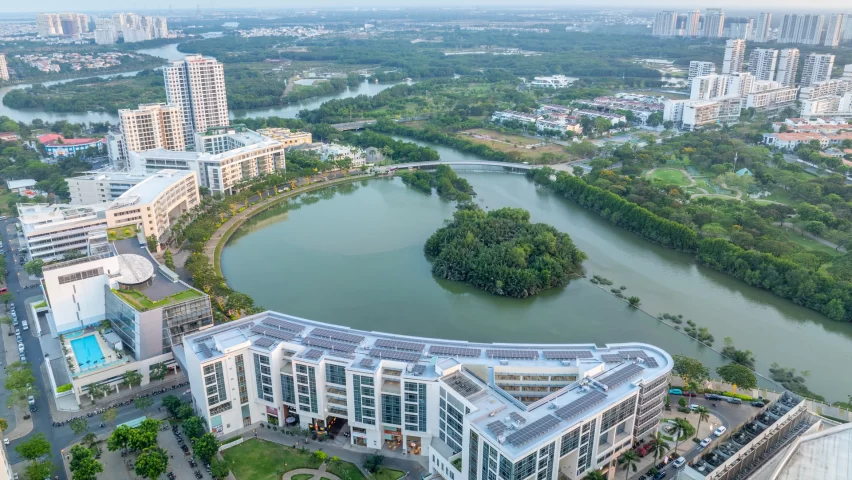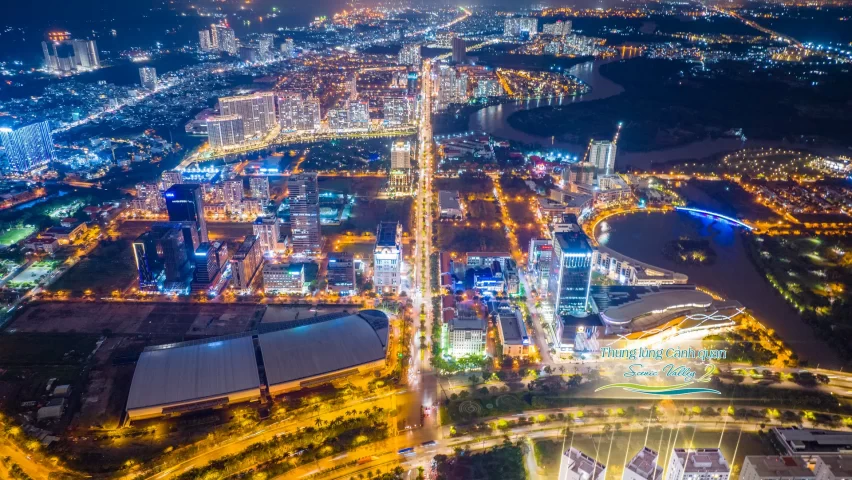Fifth instalment – A mysterious beauty
It is no coincidence that most couples in the city chose to have their wedding photos taken in Phu My Hung, said Nguyen Trong Hoa, a former Director of the Ho Chi Minh City Institute for Development Studies.
Why didn’t they go anywhere else but here? Because of the beautiful landscape created by a balanced mix of modern and artificiality and nature.
According to Hoa, the beauty of Phu My Hung shows not just in its architecture but first in its master planning. What makes PMH unique in Vietnam is that its master plan allows reasonable spaces for constructions, roads, trees, and other facilities, and reserves and makes good use of natural elements.
Back when he was Dean of the Urban Planning Faculty of the HCMC University of Architecture, Hoa often presented the master plan of the Saigon South area to his students as a good example. At that time PMH was still on paper, but Hoa said he could already see a perfect combination of ideas of the master planner’s and the investor’s. His students many years later told him that those ideas of master planning that he introduced to them were very meaningful for their career.
I once heard that PMH, with a population of 25,000, makes up 50 percent of parks of the 8-million-people Ho Chi Minh City. I’m not sure if that estimate was right but PMH is indeed like an giant garden.
Here’s another comparison: the total area of parks and trees in Ho Chi Minh City is now about 500 hectares (was 535 hectares in 2010), which is half of the 1998 statistics of 1,000 hectares. That means the green area of the city has halved over the past 10 years even though local authorities reported planting a significant number of new trees every year. On average a person in HCMC has less than 1 sq.m. of tree. The low concentration of trees was caused by many residential project investors’ failure to comply with the master plan, and their illegal use of areas allocated for trees to build houses to earn more profits. Meanwhile, of the 433-hectare area of Zone A in PMH, 124 hectares were covered with trees and 50 hectares with canals and lakes. The concentration of trees here is 8.9 sq.m. per capita.
The population of PMH is now about 25,000, half of them expats hailing from across the globe. It’s quite strange to see an urban area in Vietnam that can accept all lifestyles in the world. With a few exceptions of disputes related to policies and paperwork, there has not been any conflict among communities residing in PMH.
Right in the beginning, the investor intended to include a variety of lifestyles in PMH and therefore created an area of multi-architecture styles. Many excellent architects from the US, Europe, Japan, Singapore and Vietnam joined in developing PMH.
There’s no monotonous repeat here, no identical streets or building blocks. High-rise apartment buildings were carefully planned so that they don’t block natural light to the parks and lower floors, as well as allow residents to enjoy the view from their windows or balcony. It’s also worth noting that when being handed over to buyers, new apartments are not completed with identical decorations and furnishing. It is the buyers who will decide how it is decorated and furnished as suited their own tastes. That’s why the differences among apartments in the same block can be enormous.
An inspiring living space is one that always surprises your senses. It does so by moving with interactions, and interacting with the tranquility, but what it is that causes this motion and tranquility remains a mystery which I haven’t been able to explain. However, you’ll feel it when you live here – a feeling that can’t be expressed in words.
Residing here are normal people and incurable romantics, dynamic people and those who like a quiet life, celebrities and even hermits. And anyone who loves Saigon and identifies themselves with the city may find the spirit of an old Saigon hidden in this place, in this mystery of motion and tranquility.


